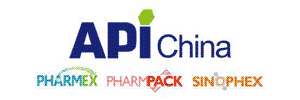Beyond Automation: Improving Efficiency, Sustainability and Reliability Using Clean-in-Place and Steam-in-Place In-Depth Analytics
21 April 2023 | Friday | Opinion | By Jennifer Williams, Product Marketing Manager, Discrete Automation at Emerson www.emerson.com

Drug manufacturers use clean-in-place (CIP) and steam-in-place (SIP) systems to internally clean equipment between batches to ensure product quality, consumer and employee safety and regulatory compliance. However, many inefficiencies can exist within these systems that may affect production levels and system reliability and sustainability.
CIP and SIP systems are time-based systems that deliver cleaning solutions and rinse water or steam through process equipment and piping without the need for any disassembly. In the pharmaceutical and life sciences industry, CIP and SIP operations are extremely harsh and the process typically includes six steps. These steps consist of multiple rinse and chemical wash cycles that vary from five minutes to over an hour. In some cases, the process may include an additional sanitizing cycle that uses strong oxidants, such as hydrogen peroxide, to further reduce the levels of bacterial contaminants.
The length and quality of CIP and SIP processes affects the amount of time it takes between the ending of one batch of product and the start of another and, ultimately, the number of batches that can be completed in a day. If a cleaning system fails to operate, it may delay the restart of production, while equipment issues can elongate a cleaning cycle or require a cycle to be rerun. A faster, dependable cleaning process can reduce the time between batches as well as resources used.
CIP and SIP operations use nearly 30% of a plant’s utilities, but it’s often unknown exactly how much energy and media each cleaning cycle consumes. Cleaning cycles also typically run for a preset amount of time that may be longer than required for proper cleaning, and a significant amount of time is spent in changeovers. This level of uncertainty and guesswork introduces the chance that processes use more resources and time than they need, resulting in wasted energy, water, steam, chemicals and, in some cases, many thousands of dollars in downtime.
Checking and reporting makes it possible for manufacturers to gain some control over their CIP and SIP processes and address possible excess, as well as comply with regulations. Many plants take a manual approach to checking and reporting, which can incur from $20,000 to $40,000 in labor costs and invite a margin of error. Some plants have begun to automate parts of their operations by incorporating devices that can provide time- or sensor-based cleaning. While basic monitoring and control can improve system efficiency, it doesn’t automate labor-intensive reporting or provide analytics that can clarify utility consumption and help improve sustainability.
For drug manufacturers to achieve greater production efficiency, sustainability and reliability, it is vital for original equipment manufacturers (OEMs) to develop CIP and SIP systems that give operators visibility into the systems and control of processes to make them as fast and effective as possible. There is a new floor-to-cloud solution available that can optimize CIP and SIP systems in this way.
A new CIP/SIP utilities and reporting solution combines robust and reliable sensor-equipped devices, such as pressure regulators and valves, with easy-to-integrate software to capture and analyze critical process data. This sophisticated tool goes beyond automating the reporting process to provide advanced analytics about CIP and SIP operations that can help manufacturers improve efficiency, reliability and sustainability and meet broader environmental and production goals. By tracking utilities, generating automated reports and comparing each cycle against an ideal golden CIP/SIP, this CIP/SIP solution can help manufacturers improve reporting accuracy by removing human error, reduce water consumption by 20% to 35% and save up to 20% of their time managing manual and semi-automated systems.
Reducing utilities waste
In CIP and SIP systems, a batch tank is connected to a water supply line and a series of cleaning supply tanks that contain media such as disinfectant, acid, caustic and reused water. Each media tank pumps a process fluid into the batch tank in a sequence according to the cleaning protocol until the timed cycle is complete and the tank is considered clean and ready for the next batch.
Despite the simplicity of this configuration, the operator who oversees the CIP system often does not know how much media is being consumed during each timed cleaning cycle.
To reliably track resource use, the new CIP utilities and reporting solution provides monitoring via sensors that gather critical process data, of air, water, steam, chemicals and energy measurements, in real time while the software receives and analyzes that data and presents it in report form. An edge device receives and collects data for local analysis before it is potentially forwarded to an enterprise-level system or the cloud. The analytics software translates data in an easy-to-read format and can generate reports that include latest process information.
With access to real-time process information, manufacturers are equipped to automate and optimize wash cycle settings, including cycle duration and media use, for optimal efficiency and maximum productivity. They also have the option to take the data and analytics further into the system to track progress toward broader goals.
Test skids have demonstrated how water, acid, detergent and reclaim can be optimized during a CIP cycle to reduce water consumption by 30% to 45% and the time operators spend at the CIP station by 20%. The significant reduction in water use improves sustainability, and the reduction in operator time can save manufacturers $20K to $40K annually and help to alleviate the pressures of a stretched workforce within the industry.
Improving production and visibility
While CIP processes are essential to production, they take time away from generating product. It’s critical that the process be as efficient as possible while providing cleaning effectiveness. One way to do this is to determine utilities and cycle effectiveness across single or multiple sites by benchmarking CIP cycles.
The cleaning cycle may run for a preset amount of time deemed sufficient for cleaning, but if no sensors or metrics are in place, then waste likely occurs during the cycle. The cycle may run much longer than is necessary to properly clean the tank and ready it for the next batch, and this extra cleaning time results in several operating costs that may exceed actual requirements. One is the cost of production downtime while the batch tank is offline during the cleaning cycle and cannot be used. Another is the extra energy a longer-than-necessary wash cycle time uses. And still another is the additional water and media being consumed beyond what is needed to effectively wash the tank.
The CIP software makes it possible to generate a “golden batch” score that represents the ideal benchmarks of a cycle running at optimal efficiency. Operators can set up automated reports to compare each wash cycle’s utilities consumption to the “golden batch” metrics to track process improvements. Reports also ensure that appropriate stakeholders can monitor key CIP parameters in real time, as well as improve traceability and visibility for one or many systems.
The overarching goal of the entire system is resource efficiency, with resources including energy, water and media, as well as personnel. The results so far have demonstrated noteworthy improvements in every resource category.
Test skids have demonstrated how shorter cycle times result in up to 50% faster changeovers. Instead of using a timed cycle, sensors and software can tell the operator when the cleaning cycle is complete. This delivers a huge benefit for manufacturers in terms of reliability, conserving media usage and reducing overall energy consumption. Shorter cycle times also get batch tanks back online faster, thereby reducing costs, increasing uptime and improving productivity.
Minimizing reporting time with greater accuracy
Yet another common inefficiency and hidden cost within a CIP process is when an operator manually logs process data like cycle times, pressures and temperatures and completes routine system reporting on paper. This pencil-and-paper approach not only requires time for the operator to capture the data for reporting, it also adds opportunities for human error during the recording process. These errors can then be transferred to other types of record keeping and documentation, potentially creating greater problems.
Digitalization of CIP systems eliminates pencil-and-paper record keeping and replaces it with software capable of instantly converting process data into organized reports. Operators can generate reports for satisfying government regulation and compliance requirements, planning system maintenance, scheduling downtime and ordering media supplies. Instead of an operator reading and manually recording data throughout a wash cycle, that data can be digitally captured, and reports can be delivered as a PDF file to the operator’s inbox and shared with other stakeholders, including sustainability officers, quality assurance officers and operations managers. Deeper analytics available with the software can also reveal insights and trends that support predictive maintenance schedules and facilitate standardization of CIP processes across multiple facilities.
Helping every plant achieve its goals
While many suppliers offer CIP hardware and sensors, few have taken the extra steps to apply the available data to the kinds of deep analytics that can fully unlock the advantages of digitalization to improve reliability, efficiency and sustainability and increase production time. Even fewer have done so in a way that allows manufacturers to pick and choose how they access the process data and whose components they use to make that data available.
System-agnostic, the CIP software is designed to connect to existing or additional sensors and smart devices, allowing manufacturers at any stage of digital transformation to receive significant benefits without committing to all-new, brand-specific components. Manufacturers can integrate any or all elements, including the sensors, controller or edge device and analytics for visualization, and can customize it for their needs. This level of flexibility gives manufacturers of all sizes the power to decide where and how they enter the digitalization process.
The range and depth of analysis and reporting the CIP software provides, including energy and utility usage trends, media trends, traceability and regulatory and compliance reporting, allow manufacturers to realize valuable benefits beyond the cleaning process itself. The latest CIP utilities and reporting software go beyond basic monitoring and control to deliver the advanced analytics that give drug manufacturers the tools to optimize their processes, achieve smarter operations and reliably reach broader sustainability and production goals.
Most Read
- Top 25 Biotech & Biopharma Leaders in Sustainable Innovation, 2025
- China’s Biopharma Dealmaking Surges in H1 2025, Driven by Record Licensing and Oncology Focus
- Chikungunya in China: How a “Forgotten” Arbovirus Found the Perfect Storm
- How Innovation Gaps in Biopharma Raise New Safety Concerns
- Smart Implants and the Future of Musculoskeletal Injury Treatment
- How Ethical Gaps in Psychiatry Could Undermine Biopharma Progress
- The Evolving Landscape of Women’s Health Innovation in the Asia-Pacific
- Using NLP-Driven Decision Support in Emergency Health Assistance
- Taiwan Steps Into the Global Spotlight With a New Cancer Therapy
- The Role of Unique Device Identification (UDI) in Tracing Medical Device Safety
- The Importance of a Patient’s Mental Health During Clinical Trials
Bio Jobs
- The State of Biotech and Life Science Jobs in Asia Pacific – 2025
- Avantor’s New CEO Ligner Aims to Unlock Global Potential and Deliver Shareholder Value
- AstraZeneca Commits $50 Billion to U.S. Expansion by 2030 in Biggest-Ever Global Investment
- Thermo Fisher, SAMRC, and South Africa’s Department of Science and Innovation Launch CATIR to Nurture Next-Gen Scientists
- Cube Biotech Appoints Former Sartorius CEO Dr. Joachim Kreuzburg to Board of Directors
- FDA’s AI Transition Marks a Turning Point in Drug Review: Industry Faces Pressure to Adapt Amid 20% Workforce Cut
- WuXi XDC Completes Mechanical Build of Singapore Bioconjugate Manufacturing Hub
News
Editor Picks











